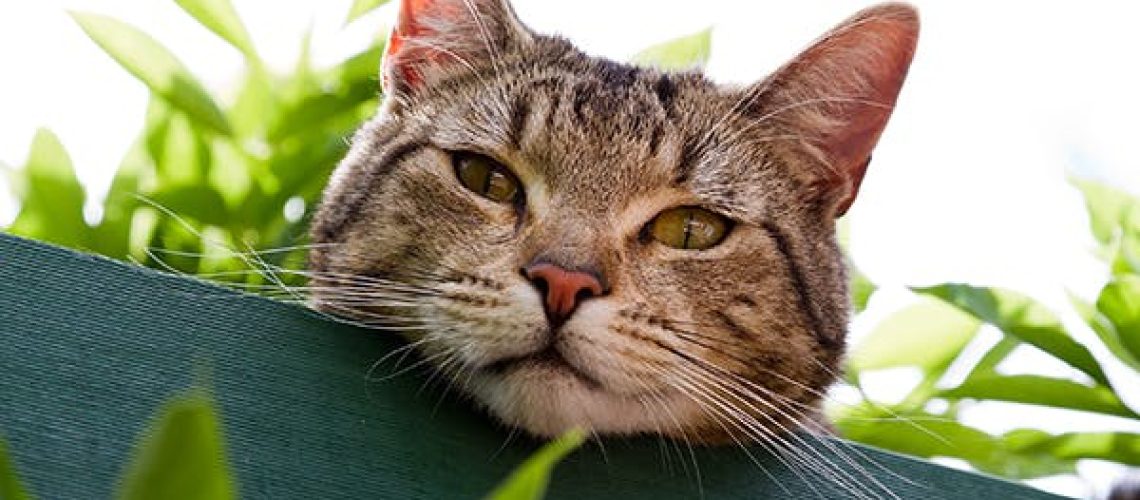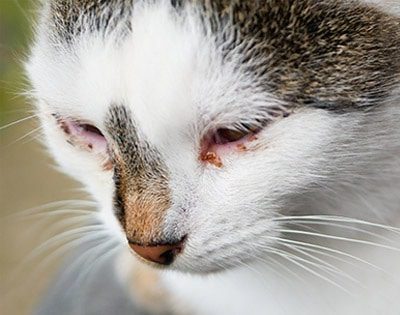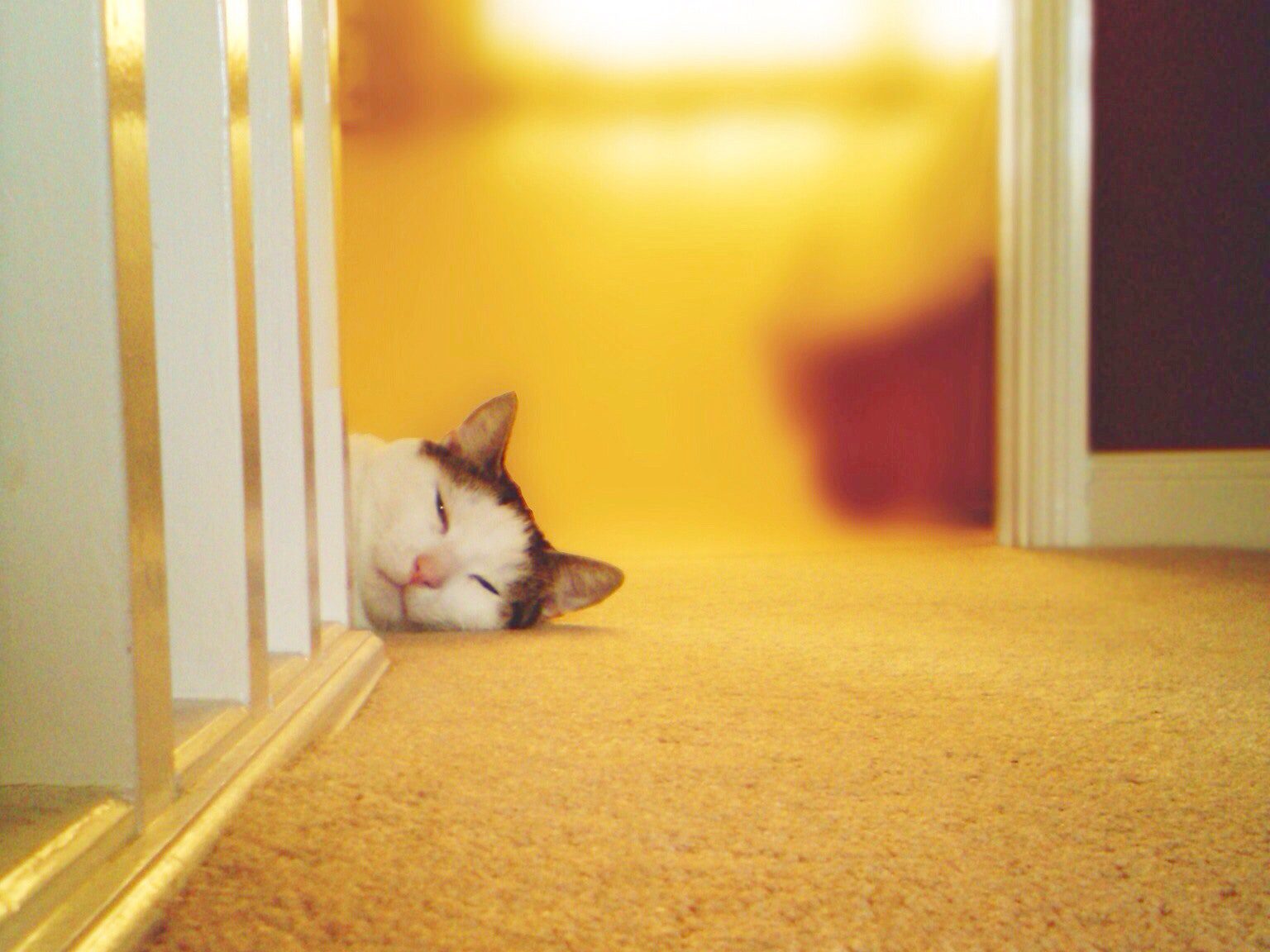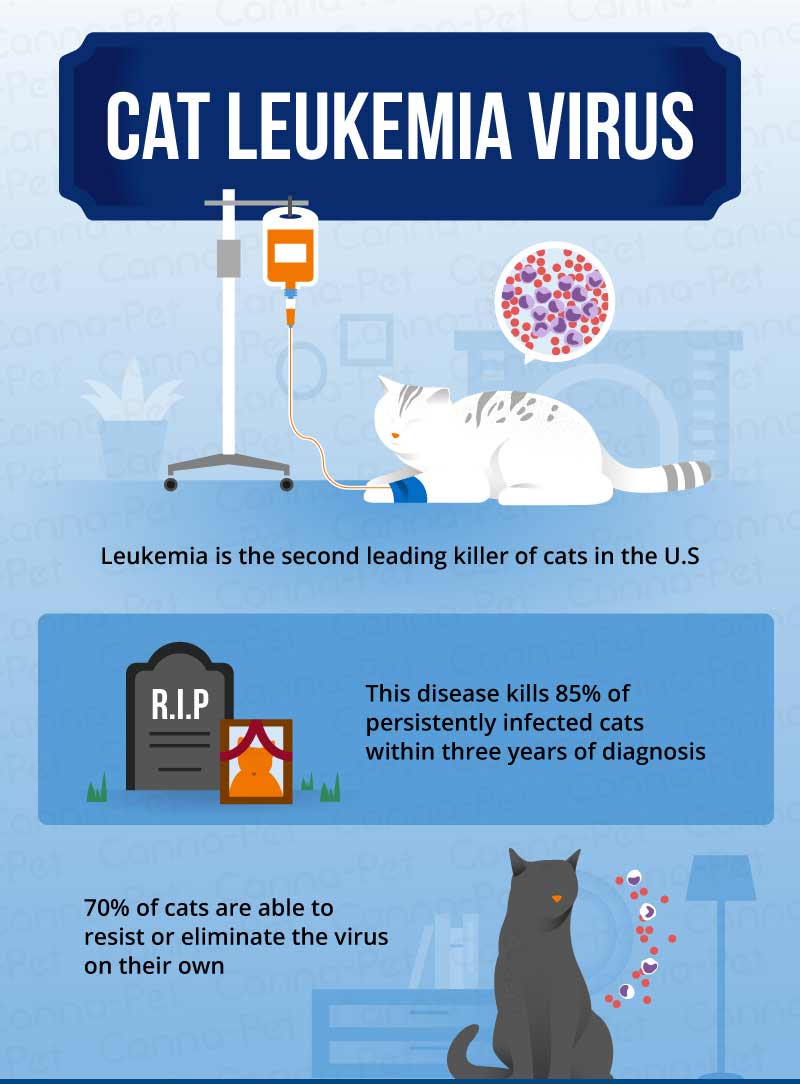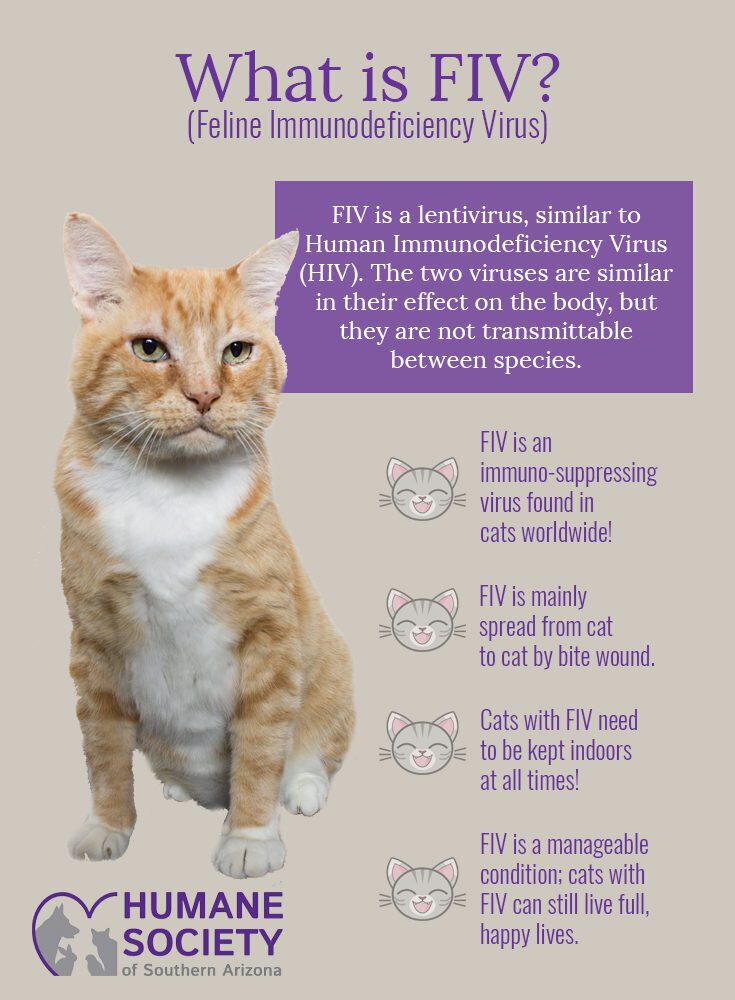Did you know that your furry feline friend could be hiding a dangerous secret? Infectious anemia, a stealthy threat for cats, is a topic that every cat owner should delve into. By understanding this hidden danger, you can ensure the health and well-being of your beloved pet. In fact, studies show that approximately 10% of cats may carry the virus responsible for infectious anemia without showing any symptoms. With such alarming statistics, it becomes essential to shed light on this subject. So, let's uncover the truth about infectious anemia and discover how we can protect our purring companions from its grasp.
Key Takeaways:
- Infectious anemia is a serious and often hidden threat for cats.
- Fleas are the most common cause of infectious anemia in cats.
- Other parasites, such as ticks and mosquitoes, can also transmit infectious anemia to cats.
- Cats with infectious anemia may show symptoms like weakness, pale gums, and loss of appetite.
- Early detection and treatment are crucial for successfully managing infectious anemia in cats.
Understanding Infectious Anemia in Cats: A Hidden Threat
What is Infectious Anemia?
Infectious anemia, also known as feline infectious anemia or hemotropic mycoplasmosis, is a serious condition that affects cats. It is caused by tiny parasites called mycoplasma haemofelis and mycoplasma haemominutum. These parasites attach themselves to the red blood cells of the cat and can cause severe damage to their health.
The infection spreads when an infected cat comes into contact with another cat's blood through bites from fleas or ticks, sharing contaminated needles, or even during mating. Kittens born to infected mothers can also acquire the infection.
How Does Infectious Anemia Spread Among Cats and How Can They Get It?
Infectious anemia spreads mainly through blood-to-blood contact between cats. Here are some common ways cats can get infected:
- Bites from fleas or ticks carrying the parasite
- Sharing contaminated needles during medical procedures
- Transmission from an infected mother to her kittens during birth
- Mating with an infected partner
It's important to note that indoor cats are not completely safe from this disease as fleas or ticks can still enter homes and transmit the infection.
Recognizing Symptoms of Infectious Anemia in Cats: What to Look Out For
Symptoms of infectious anemia in cats may vary depending on the severity of the infection. Here are some signs to watch out for:
- Pale gums and mucous membranes (inside of the mouth)
- Lethargy and weakness
- Loss of appetite and weight loss
- Fever
- Rapid breathing or difficulty breathing
- Yellowing of the skin and eyes (jaundice)
- Dark urine
If you notice any of these symptoms in your cat, it's crucial to seek veterinary care immediately. Early detection and treatment can greatly improve their chances of recovery.
Treating Infectious Anemia in Cats: Available Options for Recovery
The treatment for infectious anemia in cats involves a combination of medications to eliminate the parasites and support the cat's immune system. The specific treatment plan will depend on the severity of the infection and the overall health of the cat.
Veterinarians may prescribe antibiotics, such as doxycycline, to target the mycoplasma parasites. In severe cases, blood transfusions may be necessary to replace damaged red blood cells and improve oxygen circulation.
During treatment, it's important to provide a quiet and stress-free environment for the cat to aid their recovery. Regular follow-up appointments with the veterinarian will be necessary to monitor progress and adjust treatment if needed.
Preventing Infectious Anemia in Cats: Tips for Pet Owners
Prevention is key when it comes to infectious anemia in cats. Here are some tips to help keep your feline companion safe:
- Keep your cat indoors to minimize exposure to fleas and ticks.
- Use flea preventive treatments recommended by your veterinarian.
- Avoid allowing your cat to roam freely with other cats that may carry the infection.
- Maintain regular veterinary check-ups and screenings for infectious diseases.
- Ensure a clean and hygienic living environment for your cat.
By following these preventive measures, you can greatly reduce the risk of your cat contracting infectious anemia.
Is Infectious Anemia Contagious to Humans or Other Animals?
No, infectious anemia in cats is not contagious to humans or other animals. The mycoplasma parasites that cause this disease are specific to feline species and do not pose a risk to humans or other pets.
Possible Long-Term Effects and Complications of Infectious Anemia in Cats
If left untreated or if the infection becomes severe, infectious anemia can have long-term effects on a cat's health. Some possible complications include:
- Chronic anemia leading to weakness and fatigue
- Organ damage due to reduced oxygen supply
- Increased susceptibility to other infections
- Reduced lifespan
It's essential to address infectious anemia promptly to prevent these potential complications and give your cat the best chance at a healthy life.
How Does Infectious Anemia Spread Among Cats and How Can They Get It?
Infectious anemia in cats, also known as feline infectious anemia or hemotropic mycoplasmosis, is a condition caused by certain blood parasites. These parasites are typically spread through the bites of infected fleas, ticks, or mosquitoes. When these insects feed on an infected cat, they ingest the blood containing the parasites. The parasites then multiply within the insect's body and can be transmitted to other cats when they bite and feed on them.
Cats can also contract infectious anemia through direct contact with infected blood. This can occur during fights with other cats or through sharing contaminated needles if they have been exposed to infected blood. Kittens can acquire the infection from their mother if she is already infected.
It is important for cat owners to be aware of the potential sources of infection and take preventive measures to reduce the risk of their cats contracting infectious anemia. Regular use of flea and tick preventives, keeping cats indoors to minimize exposure to insects, and avoiding contact with stray or unknown cats can help protect against this disease.
Transmission Through Fleas, Ticks, and Mosquitoes
Fleas, ticks, and mosquitoes play a significant role in spreading infectious anemia among cats. These insects act as vectors for the blood parasites responsible for causing the disease. When an infected insect bites a cat to feed on its blood, it introduces the parasites into the cat's bloodstream. Over time, these parasites invade red blood cells and cause damage that leads to anemia.
Preventing Transmission Through Insects
To prevent transmission of infectious anemia through fleas, ticks, and mosquitoes:
1. Use veterinarian-recommended flea and tick preventives regularly.
2. Keep your cat indoors or provide a safe outdoor enclosure to minimize exposure to insects.
3. Remove any standing water sources around your home to reduce mosquito breeding grounds.
4. Consider using mosquito repellents specifically formulated for cats, but consult with your veterinarian before applying any products.
By taking these preventive measures, you can significantly reduce the risk of your cat contracting infectious anemia through insect bites and ensure their overall health and well-being.
Recognizing Symptoms of Infectious Anemia in Cats: What to Look Out For
Infectious anemia in cats is a serious condition that can have detrimental effects on their health. It is important for cat owners to be able to recognize the symptoms of this disease in order to seek prompt veterinary care. Some common signs of infectious anemia in cats include pale gums, weakness, lethargy, loss of appetite, rapid breathing, and weight loss. Additionally, you may notice your cat having difficulty walking or experiencing jaundice, which is characterized by yellowing of the skin and eyes.
If you observe any of these symptoms in your cat, it is crucial to consult a veterinarian immediately. Early detection and treatment can greatly improve the chances of recovery for your feline companion. Remember, as a responsible pet owner, it is essential to keep a close eye on your cat's overall health and behavior.
Common Symptoms:
- Pale gums
- Weakness
- Lethargy
- Loss of appetite
- Rapid breathing
- Weight loss
Less Common Symptoms:
- Difficulty walking
- Jaundice (yellowing of the skin and eyes)
When to Seek Veterinary Care:
If you notice any combination of these symptoms or suspect that your cat may have infectious anemia, it is crucial to contact a veterinarian immediately. Early intervention can make a significant difference in the outcome for your beloved pet.
Treating Infectious Anemia in Cats: Available Options for Recovery
Once diagnosed with infectious anemia, there are several treatment options available for cats that can aid in their recovery. The specific approach will depend on the underlying cause and severity of the condition. Treatment typically involves addressing the infection causing the anemia while also providing supportive care to help strengthen the cat's immune system.
In cases where the anemia is caused by a bacterial or viral infection, antibiotics or antiviral medications may be prescribed. These medications help eliminate the infectious agents and prevent further damage to the cat's red blood cells. In more severe cases, blood transfusions may be necessary to replenish the cat's red blood cell count and improve oxygen delivery throughout their body.
Treatment Options:
- Antibiotics or antiviral medications
- Supportive care to strengthen the immune system
- Blood transfusions in severe cases
Recovery Process:
During treatment, it is crucial to closely follow your veterinarian's instructions and administer any prescribed medications as directed. Regular check-ups will be necessary to monitor your cat's progress and make any necessary adjustments to the treatment plan. With proper care and timely intervention, many cats can recover from infectious anemia and regain their health.
Preventing Infectious Anemia in Cats: Tips for Pet Owners
As a responsible pet owner, there are several steps you can take to help prevent infectious anemia in your cat. By implementing these preventive measures, you can significantly reduce the risk of your feline companion contracting this potentially life-threatening condition.
Firstly, ensure that your cat receives regular vaccinations as recommended by your veterinarian. Vaccinations protect against common infectious diseases that can lead to anemia. Additionally, it is essential to keep your cat indoors or provide them with a safe outdoor enclosure to minimize exposure to infected animals.
Maintaining good hygiene practices is also crucial in preventing infectious anemia. Regularly clean your cat's living area and litter box, wash their bedding frequently, and provide them with a balanced diet that supports a healthy immune system.
Tips for Prevention:
- Ensure regular vaccinations
- Keep cats indoors or provide safe outdoor enclosures
- Maintain good hygiene practices (cleaning living area, litter box, and bedding)
- Provide a balanced diet for a healthy immune system
Consulting with Your Veterinarian:
To develop a comprehensive prevention plan tailored to your cat's specific needs, it is recommended to consult with your veterinarian. They can provide guidance on vaccination schedules, proper hygiene practices, and other preventive measures based on your cat's individual circumstances.
Is Infectious Anemia Contagious to Humans or Other Animals?
Infectious anemia in cats is caused by specific pathogens that primarily affect felines. Fortunately, the disease is not contagious to humans or other animals. However, it is crucial to note that some of the underlying infections that can lead to infectious anemia in cats may be transmissible to other animals or pose a risk to human health.
For example, certain bacterial infections that cause anemia in cats can also affect dogs or other animals. Additionally, some viral infections may have zoonotic potential, meaning they can be transmitted from animals to humans. It is important for pet owners to practice good hygiene and take necessary precautions when dealing with any infectious diseases affecting their pets.
Contagion Information:
- Infectious anemia in cats is not contagious to humans or other animals.
- Underlying infections causing anemia may be transmissible between different animal species.
- Some viral infections may have zoonotic potential (transmission from animals to humans).
Precautions for Pet Owners:
To minimize the risk of transmission and ensure the well-being of both your cat and yourself, it is advisable to follow proper hygiene practices when handling sick animals or their bodily fluids. Regular handwashing after contact with pets and avoiding direct exposure to potentially infected materials are simple yet effective precautions.
Possible Long-Term Effects and Complications of Infectious Anemia in Cats
Infectious anemia in cats, if left untreated or not managed effectively, can lead to various long-term effects and complications. These consequences can significantly impact the overall health and quality of life for affected felines.
One of the potential long-term effects is chronic anemia, where the cat's red blood cell count remains persistently low. Chronic anemia can result in weakness, fatigue, and reduced ability to engage in normal activities. It may also compromise the cat's immune system, making them more susceptible to other infections.
Additionally, infectious anemia can cause organ damage due to decreased oxygen supply throughout the body. Organs such as the heart, liver, and kidneys may be particularly affected. This can lead to further health complications and potentially irreversible damage if not addressed promptly.
Possible Long-Term Effects:
- Chronic anemia (persistently low red blood cell count)
- Weakness, fatigue, and reduced activity levels
- Compromised immune system
- Organ damage (heart, liver, kidneys)
Importance of Timely Treatment:
To minimize the risk of long-term effects and complications associated with infectious anemia in cats, early detection and prompt treatment are crucial. If you suspect your cat may have this condition or notice any symptoms indicative of anemia, consult a veterinarian immediately for proper diagnosis and appropriate treatment options. By taking swift action, you can help ensure a better prognosis for your beloved feline companion.
Infectious anemia can be a dangerous and hidden threat for cats. It is important for cat owners to be aware of the symptoms and take preventive measures to keep their furry friends safe and healthy.
How do cats get infectious anemia?
Feline Infectious Anemia is an illness that occurs when a tiny parasite called Hemobartonella felis attaches itself to red blood cells in cats. The cat's immune system identifies and eliminates these infected red blood cells, leading to anemia.
What is the prognosis for feline infectious anemia?
If the FeLV is detected, the immediate outlook is typically positive, but the long-term outlook is negative due to the illnesses caused by the feline leukemia virus.
Can feline infectious anemia be cured?
Cats diagnosed with Feline Infectious Anemia (FIA) typically demonstrate quick improvement in their symptoms after treatment, usually within a few days. However, complete recovery is often not achieved. In general, cats without any underlying health conditions have a positive prognosis.
Can a cat live with anemia?
Cats with early diagnosis of anemia and overall good health have a positive outlook. However, cats that have anemia caused by toxins, cancer, autoimmune diseases, or severe trauma have a less positive prognosis.
What antibiotic treats feline infectious anemia?
When treating cats with Infectious Anemia, the most effective antibiotic to use is doxycycline. However, tetracycline and oxytetracycline are also considered reliable options. Typically, antibiotics are administered for a duration of three weeks. After this period, the cat will need to undergo another examination to confirm that there are no traces of mycoplasmas in their blood.
Can anemia in cats come on suddenly?
Regenerative anemia occurs in younger cats and is caused by sudden or acute blood loss, which can be a result of injury, parasites, infection, or a serious illness like cancer.



